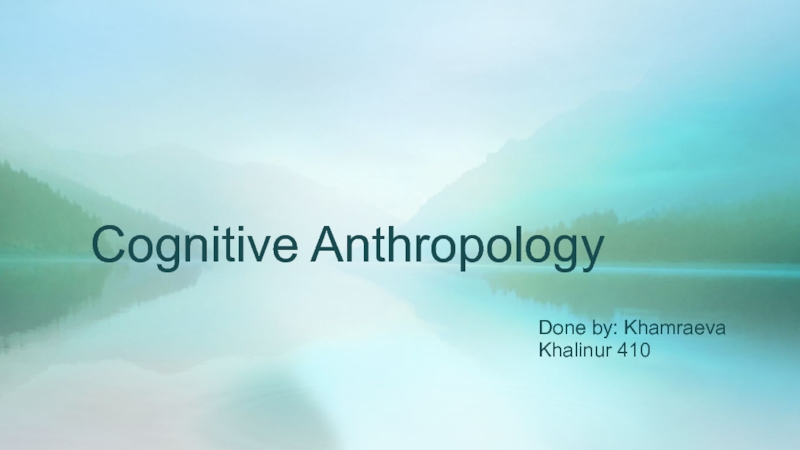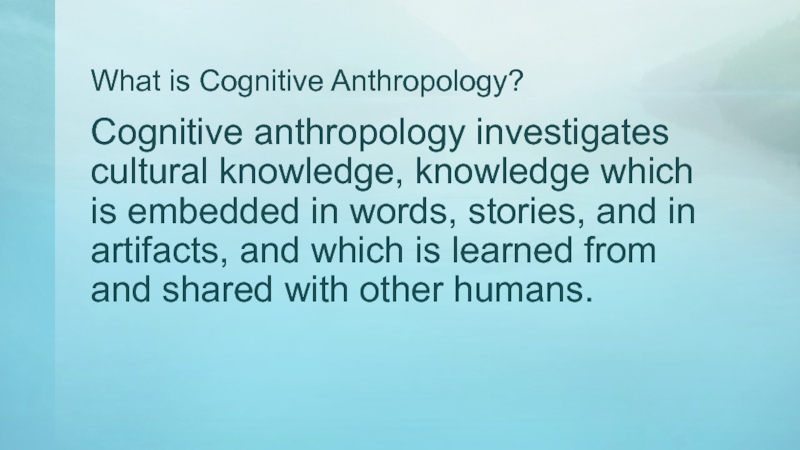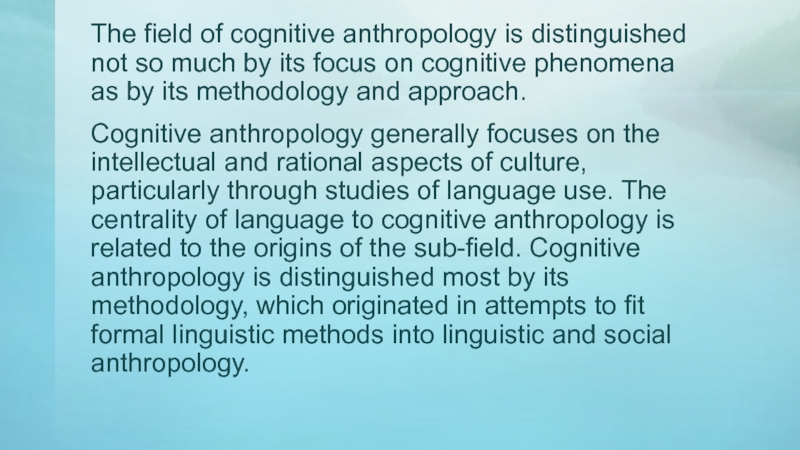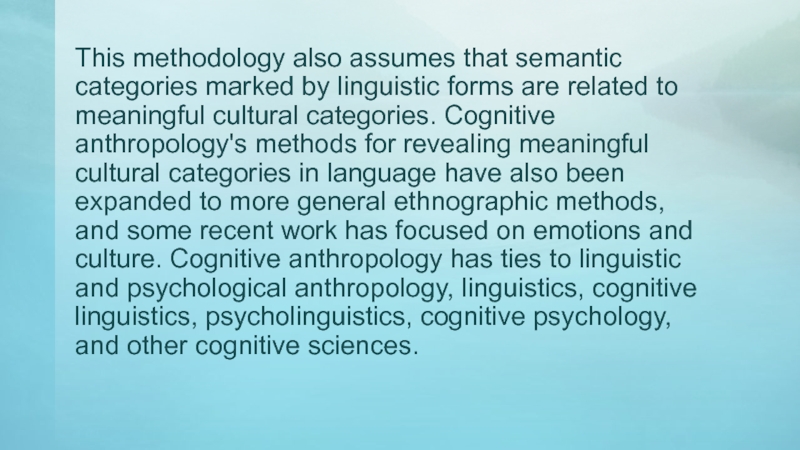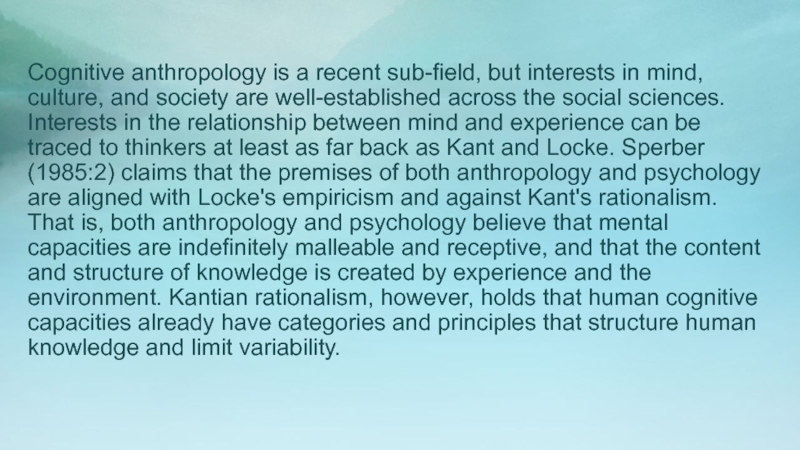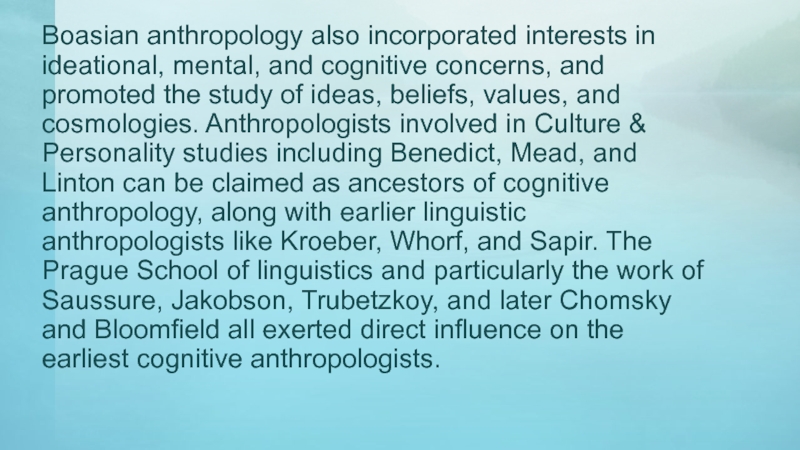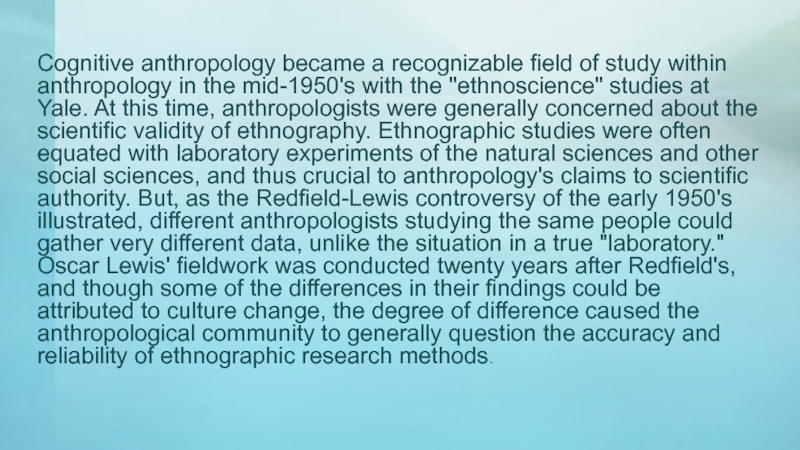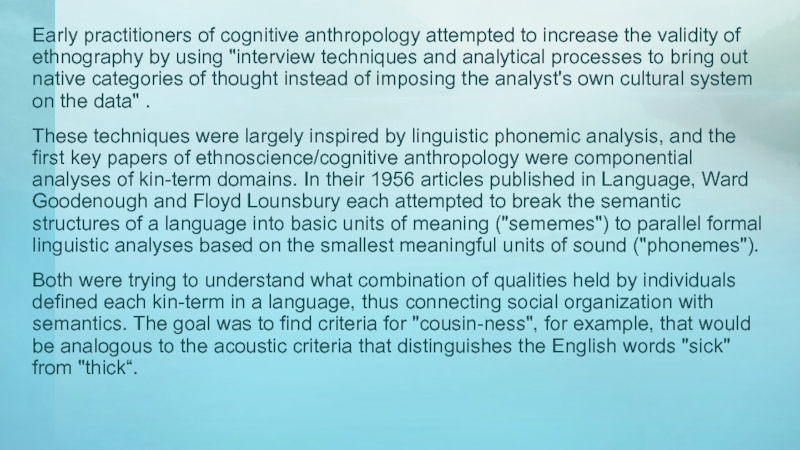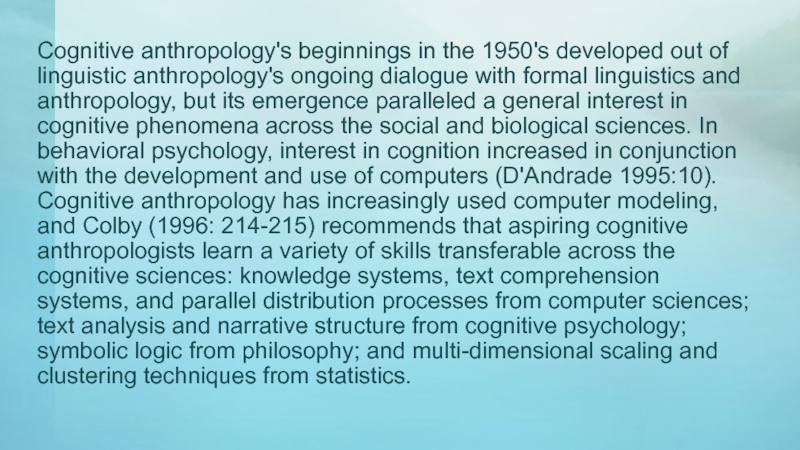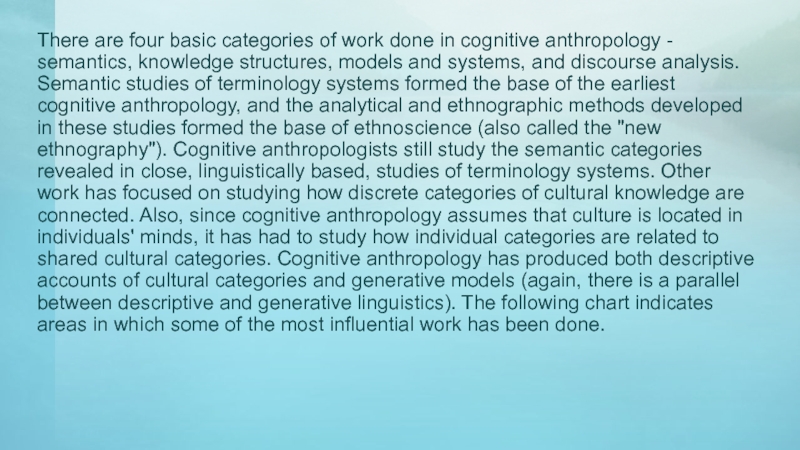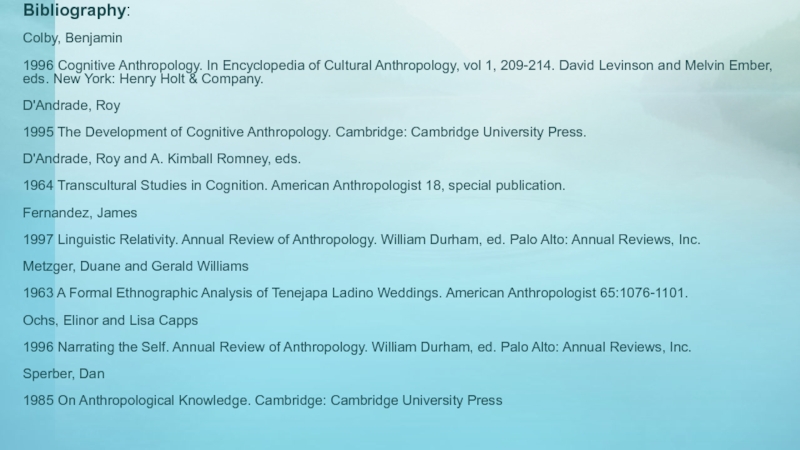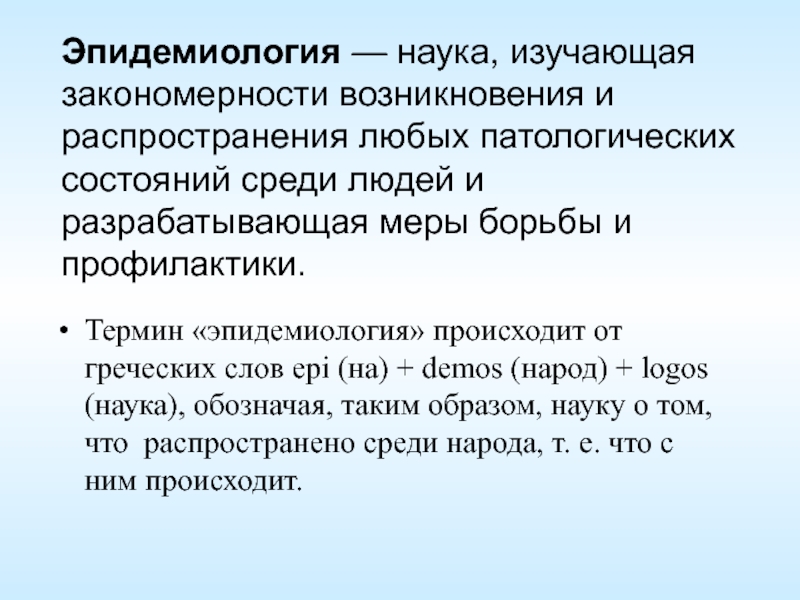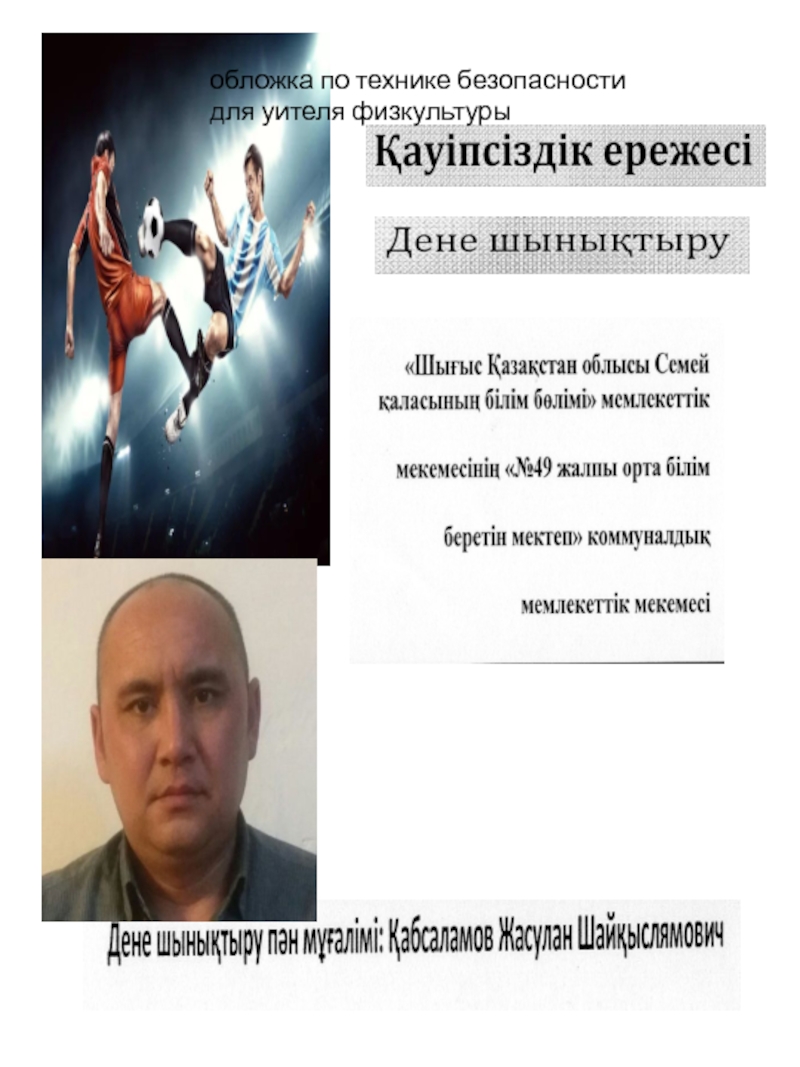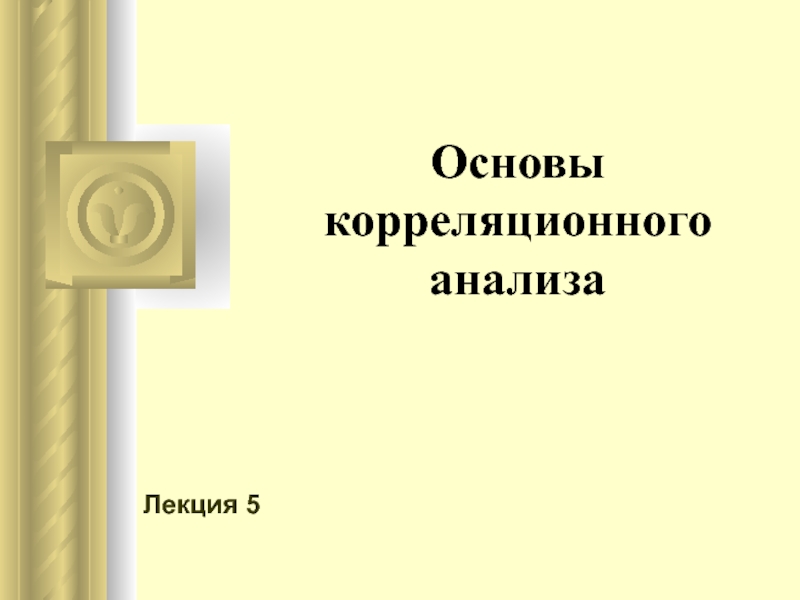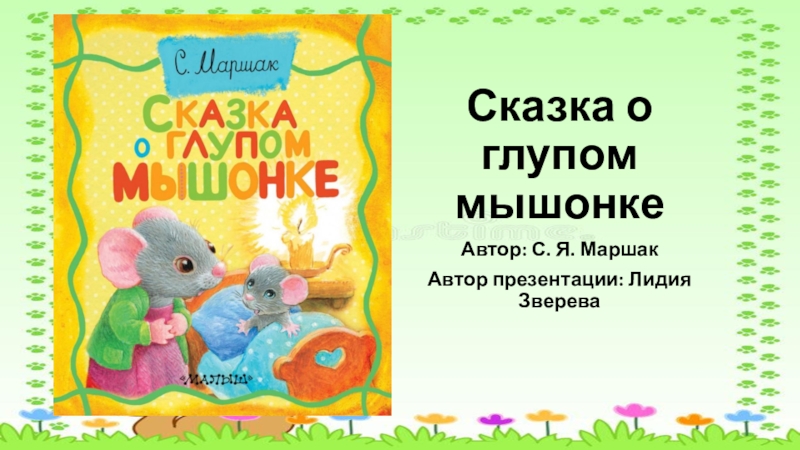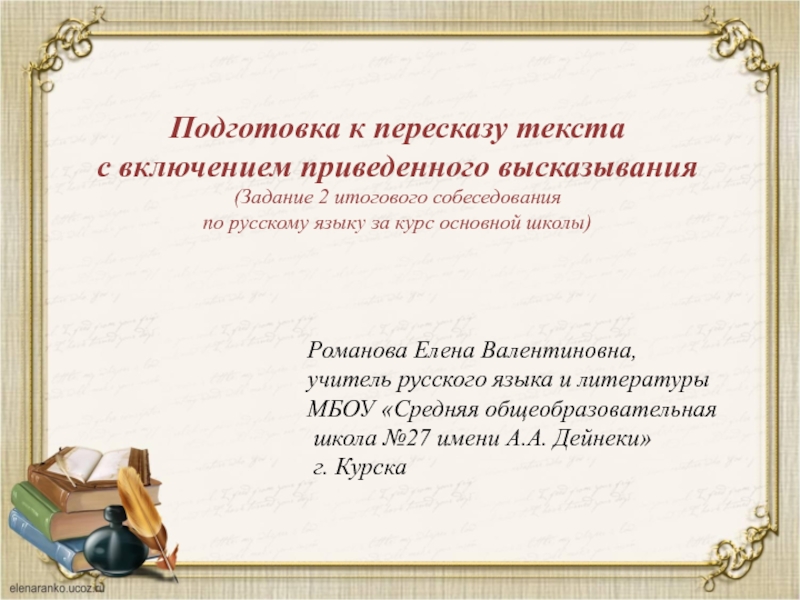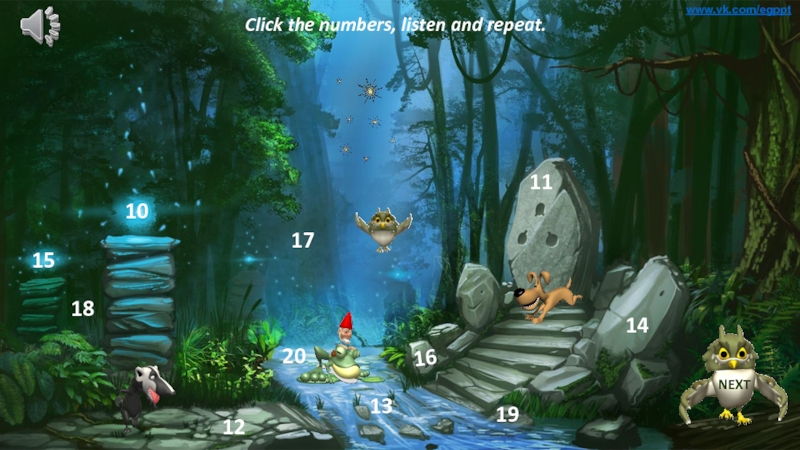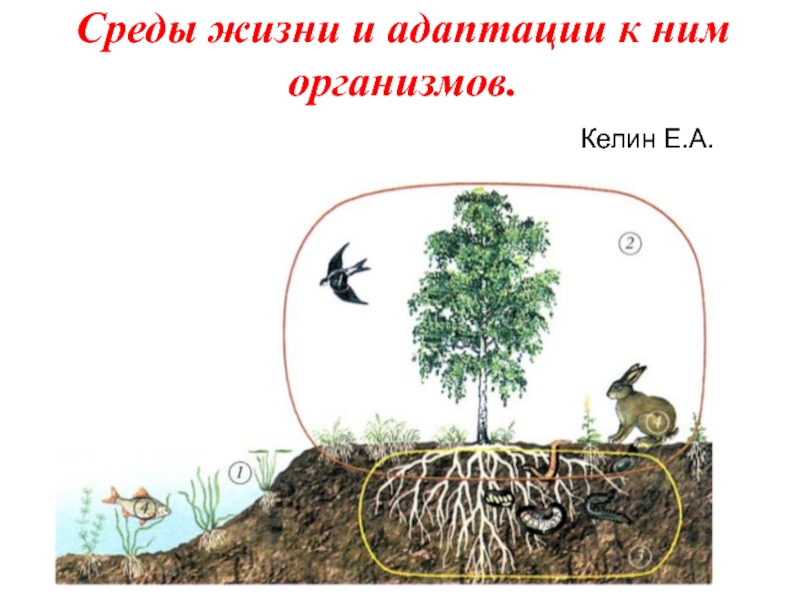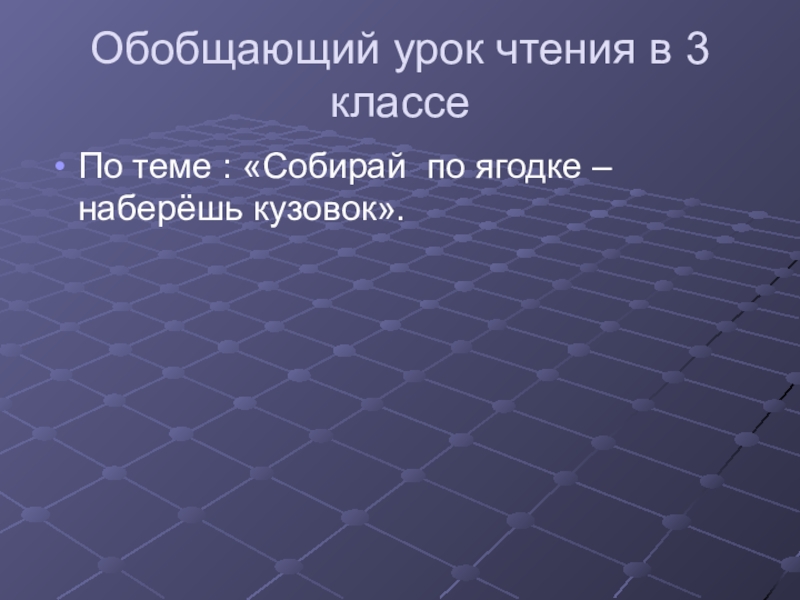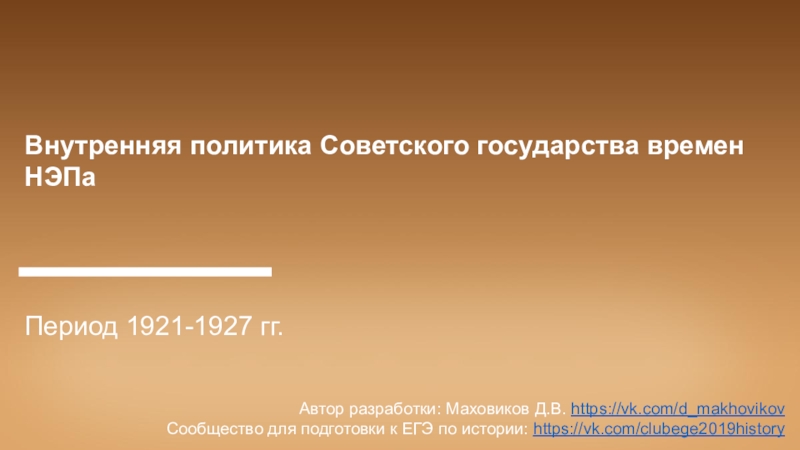Разделы презентаций
- Разное
- Английский язык
- Астрономия
- Алгебра
- Биология
- География
- Геометрия
- Детские презентации
- Информатика
- История
- Литература
- Математика
- Медицина
- Менеджмент
- Музыка
- МХК
- Немецкий язык
- ОБЖ
- Обществознание
- Окружающий мир
- Педагогика
- Русский язык
- Технология
- Физика
- Философия
- Химия
- Шаблоны, картинки для презентаций
- Экология
- Экономика
- Юриспруденция
Cognitive Anthropology
Содержание
- 1. Cognitive Anthropology
- 2. What is Cognitive Anthropology?Cognitive anthropology investigates cultural
- 3. The field of cognitive anthropology is distinguished
- 4. This methodology also assumes that semantic categories
- 5. Cognitive anthropology is a recent sub-field, but
- 6. Boasian anthropology also incorporated interests in ideational,
- 7. Cognitive anthropology became a recognizable field of
- 8. Early practitioners of cognitive anthropology attempted to
- 9. Cognitive anthropology's beginnings in the 1950's developed
- 10. There are four basic categories of work
- 11. Bibliography:Colby, Benjamin1996 Cognitive Anthropology. In Encyclopedia of
- 12. Скачать презентанцию
What is Cognitive Anthropology?Cognitive anthropology investigates cultural knowledge, knowledge which is embedded in words, stories, and in artifacts, and which is learned from and shared with other humans.
Слайды и текст этой презентации
Слайд 2What is Cognitive Anthropology?
Cognitive anthropology investigates cultural knowledge, knowledge which
Слайд 3The field of cognitive anthropology is distinguished not so much
by its focus on cognitive phenomena as by its methodology
and approach.Cognitive anthropology generally focuses on the intellectual and rational aspects of culture, particularly through studies of language use. The centrality of language to cognitive anthropology is related to the origins of the sub-field. Cognitive anthropology is distinguished most by its methodology, which originated in attempts to fit formal linguistic methods into linguistic and social anthropology.
Слайд 4This methodology also assumes that semantic categories marked by linguistic
forms are related to meaningful cultural categories. Cognitive anthropology's methods
for revealing meaningful cultural categories in language have also been expanded to more general ethnographic methods, and some recent work has focused on emotions and culture. Cognitive anthropology has ties to linguistic and psychological anthropology, linguistics, cognitive linguistics, psycholinguistics, cognitive psychology, and other cognitive sciences.Слайд 5Cognitive anthropology is a recent sub-field, but interests in mind,
culture, and society are well-established across the social sciences. Interests
in the relationship between mind and experience can be traced to thinkers at least as far back as Kant and Locke. Sperber (1985:2) claims that the premises of both anthropology and psychology are aligned with Locke's empiricism and against Kant's rationalism. That is, both anthropology and psychology believe that mental capacities are indefinitely malleable and receptive, and that the content and structure of knowledge is created by experience and the environment. Kantian rationalism, however, holds that human cognitive capacities already have categories and principles that structure human knowledge and limit variability.Слайд 6Boasian anthropology also incorporated interests in ideational, mental, and cognitive
concerns, and promoted the study of ideas, beliefs, values, and
cosmologies. Anthropologists involved in Culture & Personality studies including Benedict, Mead, and Linton can be claimed as ancestors of cognitive anthropology, along with earlier linguistic anthropologists like Kroeber, Whorf, and Sapir. The Prague School of linguistics and particularly the work of Saussure, Jakobson, Trubetzkoy, and later Chomsky and Bloomfield all exerted direct influence on the earliest cognitive anthropologists.Слайд 7Cognitive anthropology became a recognizable field of study within anthropology
in the mid-1950's with the "ethnoscience" studies at Yale. At
this time, anthropologists were generally concerned about the scientific validity of ethnography. Ethnographic studies were often equated with laboratory experiments of the natural sciences and other social sciences, and thus crucial to anthropology's claims to scientific authority. But, as the Redfield-Lewis controversy of the early 1950's illustrated, different anthropologists studying the same people could gather very different data, unlike the situation in a true "laboratory." Oscar Lewis' fieldwork was conducted twenty years after Redfield's, and though some of the differences in their findings could be attributed to culture change, the degree of difference caused the anthropological community to generally question the accuracy and reliability of ethnographic research methods.Слайд 8Early practitioners of cognitive anthropology attempted to increase the validity
of ethnography by using "interview techniques and analytical processes to
bring out native categories of thought instead of imposing the analyst's own cultural system on the data" .These techniques were largely inspired by linguistic phonemic analysis, and the first key papers of ethnoscience/cognitive anthropology were componential analyses of kin-term domains. In their 1956 articles published in Language, Ward Goodenough and Floyd Lounsbury each attempted to break the semantic structures of a language into basic units of meaning ("sememes") to parallel formal linguistic analyses based on the smallest meaningful units of sound ("phonemes").
Both were trying to understand what combination of qualities held by individuals defined each kin-term in a language, thus connecting social organization with semantics. The goal was to find criteria for "cousin-ness", for example, that would be analogous to the acoustic criteria that distinguishes the English words "sick" from "thick“.
Слайд 9Cognitive anthropology's beginnings in the 1950's developed out of linguistic
anthropology's ongoing dialogue with formal linguistics and anthropology, but its
emergence paralleled a general interest in cognitive phenomena across the social and biological sciences. In behavioral psychology, interest in cognition increased in conjunction with the development and use of computers (D'Andrade 1995:10). Cognitive anthropology has increasingly used computer modeling, and Colby (1996: 214-215) recommends that aspiring cognitive anthropologists learn a variety of skills transferable across the cognitive sciences: knowledge systems, text comprehension systems, and parallel distribution processes from computer sciences; text analysis and narrative structure from cognitive psychology; symbolic logic from philosophy; and multi-dimensional scaling and clustering techniques from statistics.Слайд 10There are four basic categories of work done in cognitive
anthropology - semantics, knowledge structures, models and systems, and discourse
analysis. Semantic studies of terminology systems formed the base of the earliest cognitive anthropology, and the analytical and ethnographic methods developed in these studies formed the base of ethnoscience (also called the "new ethnography"). Cognitive anthropologists still study the semantic categories revealed in close, linguistically based, studies of terminology systems. Other work has focused on studying how discrete categories of cultural knowledge are connected. Also, since cognitive anthropology assumes that culture is located in individuals' minds, it has had to study how individual categories are related to shared cultural categories. Cognitive anthropology has produced both descriptive accounts of cultural categories and generative models (again, there is a parallel between descriptive and generative linguistics). The following chart indicates areas in which some of the most influential work has been done.Слайд 11Bibliography:
Colby, Benjamin
1996 Cognitive Anthropology. In Encyclopedia of Cultural Anthropology, vol
1, 209-214. David Levinson and Melvin Ember, eds. New York:
Henry Holt & Company.D'Andrade, Roy
1995 The Development of Cognitive Anthropology. Cambridge: Cambridge University Press.
D'Andrade, Roy and A. Kimball Romney, eds.
1964 Transcultural Studies in Cognition. American Anthropologist 18, special publication.
Fernandez, James
1997 Linguistic Relativity. Annual Review of Anthropology. William Durham, ed. Palo Alto: Annual Reviews, Inc.
Metzger, Duane and Gerald Williams
1963 A Formal Ethnographic Analysis of Tenejapa Ladino Weddings. American Anthropologist 65:1076-1101.
Ochs, Elinor and Lisa Capps
1996 Narrating the Self. Annual Review of Anthropology. William Durham, ed. Palo Alto: Annual Reviews, Inc.
Sperber, Dan
1985 On Anthropological Knowledge. Cambridge: Cambridge University Press
